How “Ghostbusters: Frozen Empire” Cinematographer Eric Steelberg Brought Slimer & the Firehouse Back to Life
Ghostbusters: Frozen Empire has a visual style reminiscent of the iconic 1984 film, a palette cinematographer Eric Steelberg (Ahsoka, Hawkeye) intentionally crafted for this story that sees characters new and old strap on a proton pack to bust a chilling demon terrorizing their city. “We wanted to capture the texture, color, and grit of the original movie so nothing seemed too new,” Steelberg tells The Credits about creating the look that artfully blends rich hues and deep blacks for a heightened, naturalistic appeal.
Frozen Empire picks up where Ghostbusters: Afterlife (2021) left off and sees the Spengler family – Callie (Carrie Coon), Trevor (Finn Wolfhard), Phoebe (McKenna Grace), and Gary (Paul Rudd) – returning to the firehouse. Steelberg collaborated with longtime friend and director Jason Reitman on the revival, but Gil Kenan, who co-wrote Afterlife and Frozen Empire along with Jason, stepped in to direct following the passing of Jason’s father – Ghostbusters co-creator and director Ivan Reitman (75). Frozen Empire became a tribute to the beloved filmmaker who brought us National Lampoon’s Animal House (1978), Stripes (1981), and Kindergarten Cop (1990). “We sat outside with my dad, and we started telling him all our ideas for the next Ghostbusters movie,” Jason stated in the film’s production notes. “We laid it all out for him, and it’s the last story that I ever got to tell my dad – the story of Frozen Empire, a new adventure for the Ghostbusters back in Manhattan.”
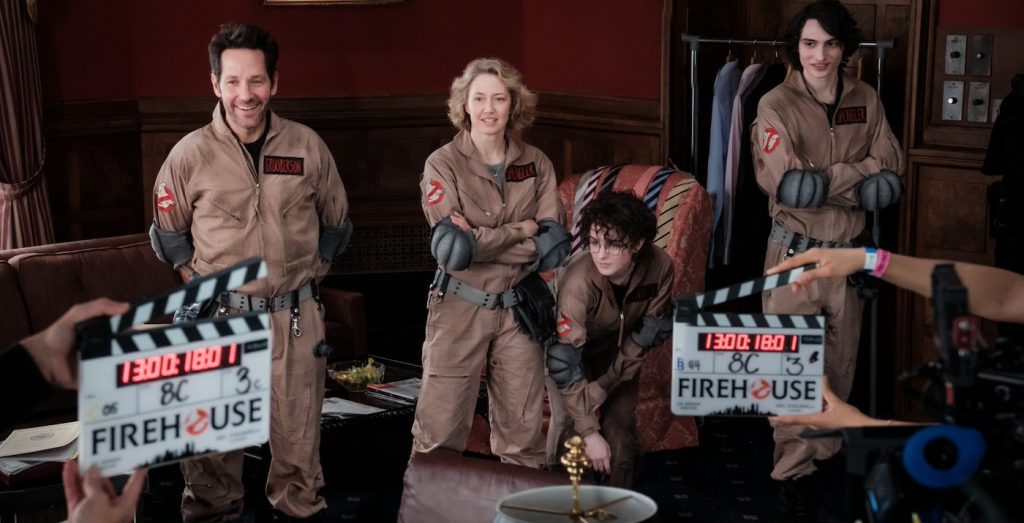
With Jason serving as executive producer, Kenan saw the story as a family trying to “define a home” and “ground themselves,” all while fighting an evil that turns anything into a frozen popsicle. To pull off the imagery, Steelberg referenced what was successful in Afterlife and carried it over to Frozen Empire, including shooting widescreen anamorphic using Panavision T Series lenses with Arri Alexa LF cameras. Nailing the “gritty vibe of the city” was especially key for the cinematographer, but his biggest hurdle was visually introducing new locations that had never been seen before. “There is more of the firehouse in our movie than any of the other movies, so it became a central character. Trying to learn and reinterpret the lighting and the look of the interior of the firehouse was, to be quite honest, a bit stressful,” he admits. “It’s such a beloved set piece, and people have expectations of what they want it to look like, and I had my own interpretation of that, which may or may not align with people. But I am hoping it pleases everybody.”
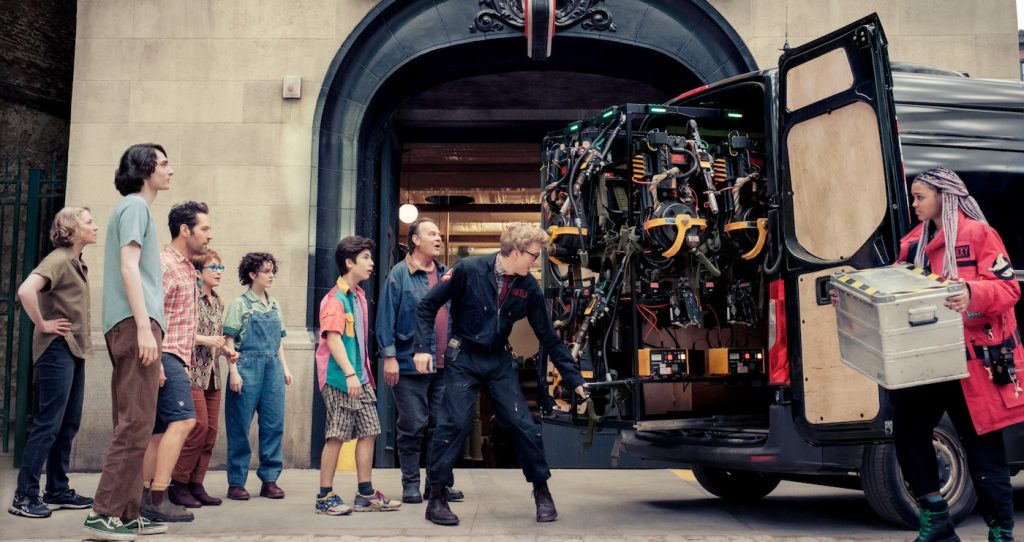
Production designer Eve Stewart (The King’s Speech, Les Misérables) created the firehouse sets on London soundstages, building three floors connected by a fire pole. The basement that houses the container of captured ghosts saw the most action. “In that location, we have new angles that will hopefully surprise some people because it reveals parts of the basement that were previously unseen, and that’s really fun to do,” says the cinematographer.
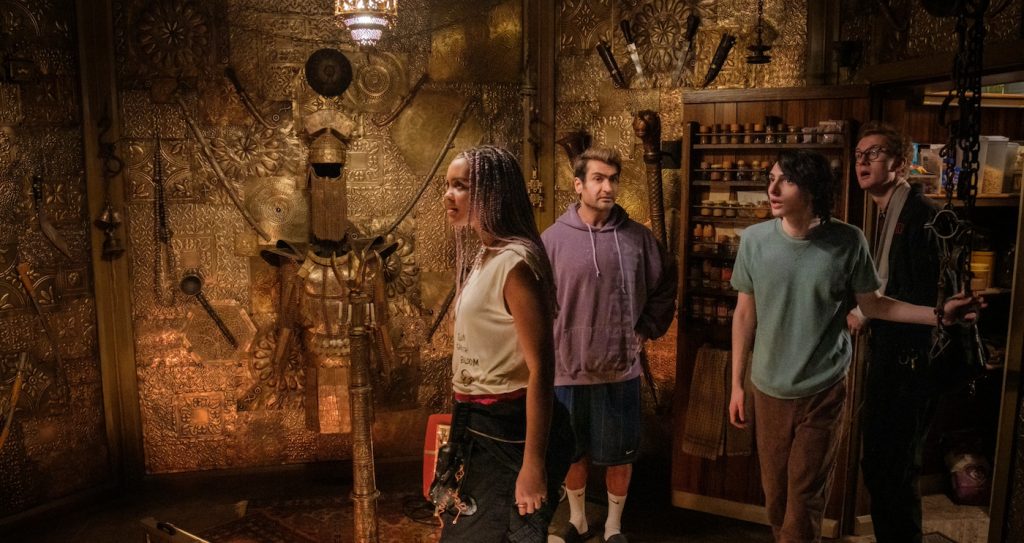
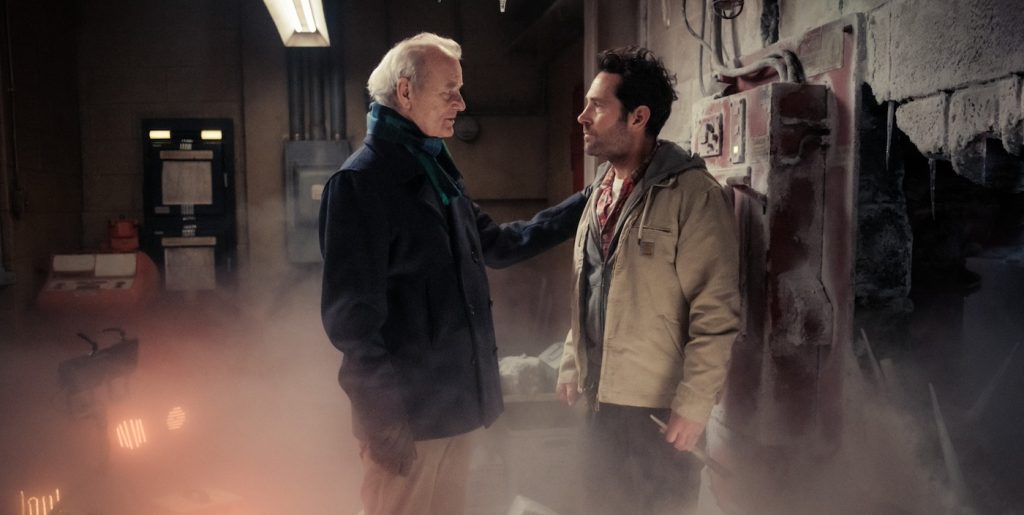
Also, part of the firehouse is a creepy attic where Trevor finds the snack food-eating misfit Slimer. Filming scenes with the green monster was an in-camera creation from special effects headed by John Van Der Pool. A puppet was built, and performers created the movements on set, which were composited into the scene with the actor instead of a CG-created Slimer. A similar technique was used in the original films. Frozen Empire also marked the first in-camera slime, where instead of the camera cutting away to pour sticky goop on an actor, a self-contained pack discharged a gooey mess on the front and back of the actor as Slimer passes through them. “Shooting a puppet looks different than one that’s CG. Where we could, we tried to make them real and make them composites rather than computer generated,” says Steelberg.
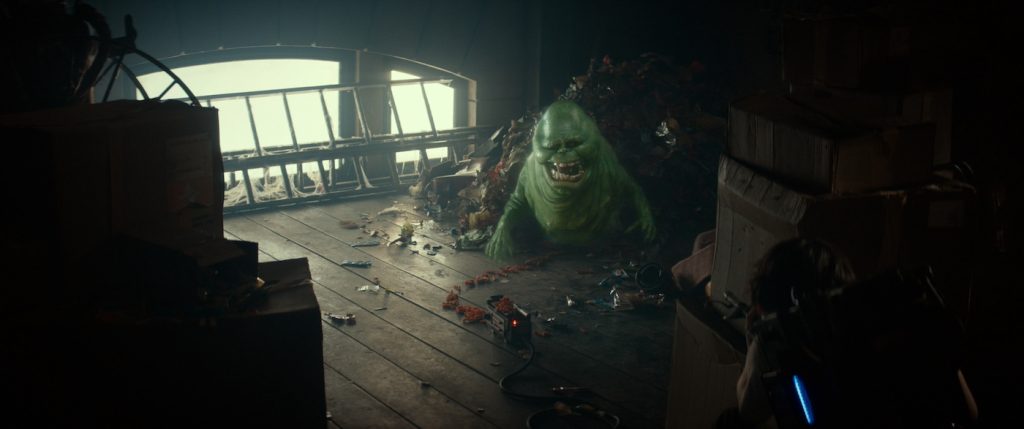
Even with production developing in-camera techniques, the film had its share of visual effects overseen by VFX supervisor Geoff Baumann and VFX producer Nicole Rowley. The larger tasks include the opening Ecto-1 chase sequence that sees the Spengler family race through the streets to contain a snake-like dragon, the Possessor ghost, which can bring any inanimate object to life – including a very funny pizza scene, and, of course, the horned undead monster Garraka. “There were more visual effects by a couple of magnitudes on Frozen Empire than Afterlife,” notes Steelberg. “A lot of our shoot was dedicated to figuring out workflows and previs and how to successfully shoot scenes that play into the success of visual effects. For instance, if we knew better effects could be accomplished, we would try to shoot things to allow for that. It was in our best interest to shoot in a way that gave us the highest chance of success in how they blended, looked, or felt real.” By carrying over a similar camera package from Afterlife, production was able to spend less time testing cameras and lenses and more time practicing techniques in prep that supported visual effects.
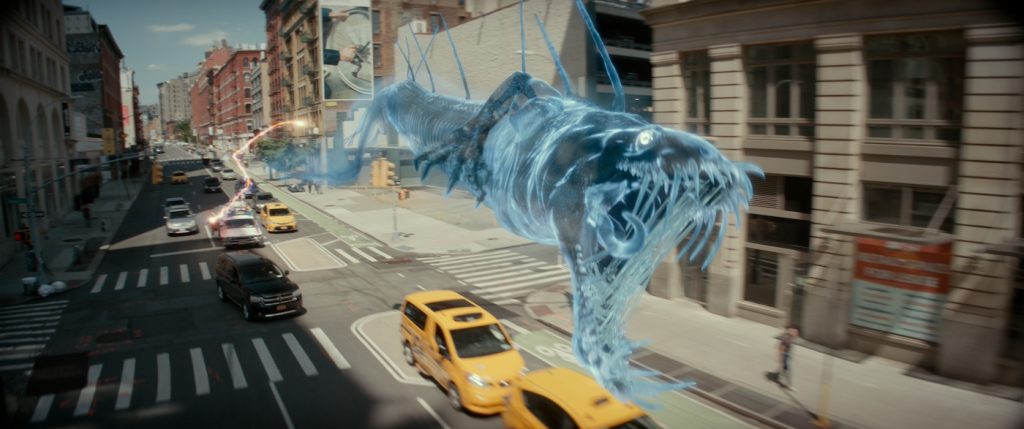
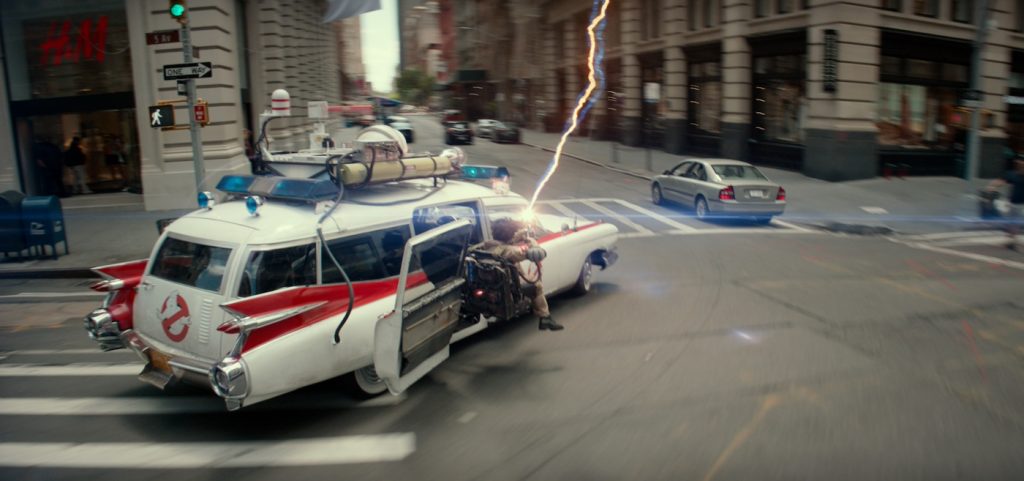
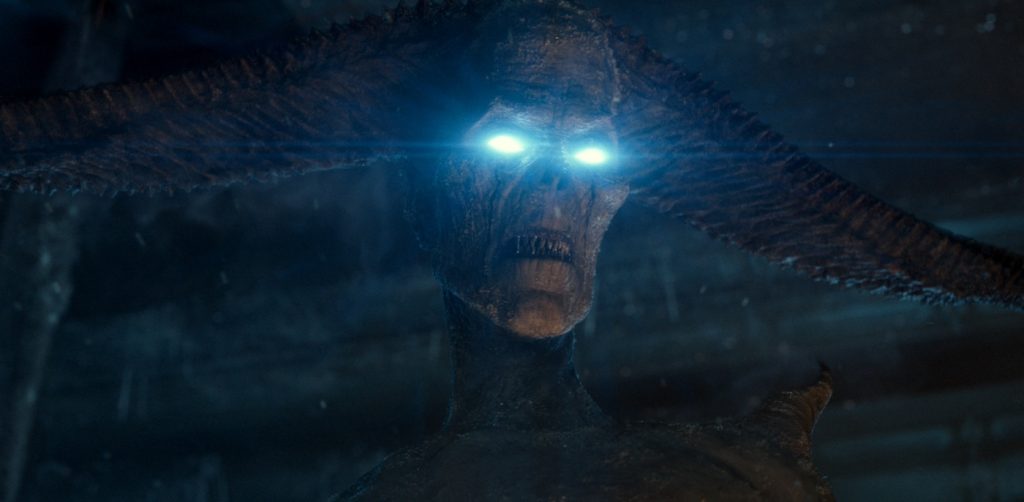
By the end, the entire Ghostbusters gang – Winston, Peter, Ray, and even Janine the secretary – are together with the Spenglers to stop Garraka from releasing all the ghosts from the firehouse container. The climactic moment had the cinematographer carefully considering the composition and framing. “Gil and I had a conversation about color and contrast, how bright something was going to be. But we always started with how it should feel and then how we sell that visually. By the end, things do get covered in ice but we didn’t want it to feel like something new. We wanted it to feel like the firehouse was invaded as opposed to turning into something completely different.”
Ghostbusters: Frozen Empire is in theaters now.
Featured image: The firehouse freezes over in New York City in Columbia Pictures’ GHOSTBUSTERS: FROZEN EMPIRE.



